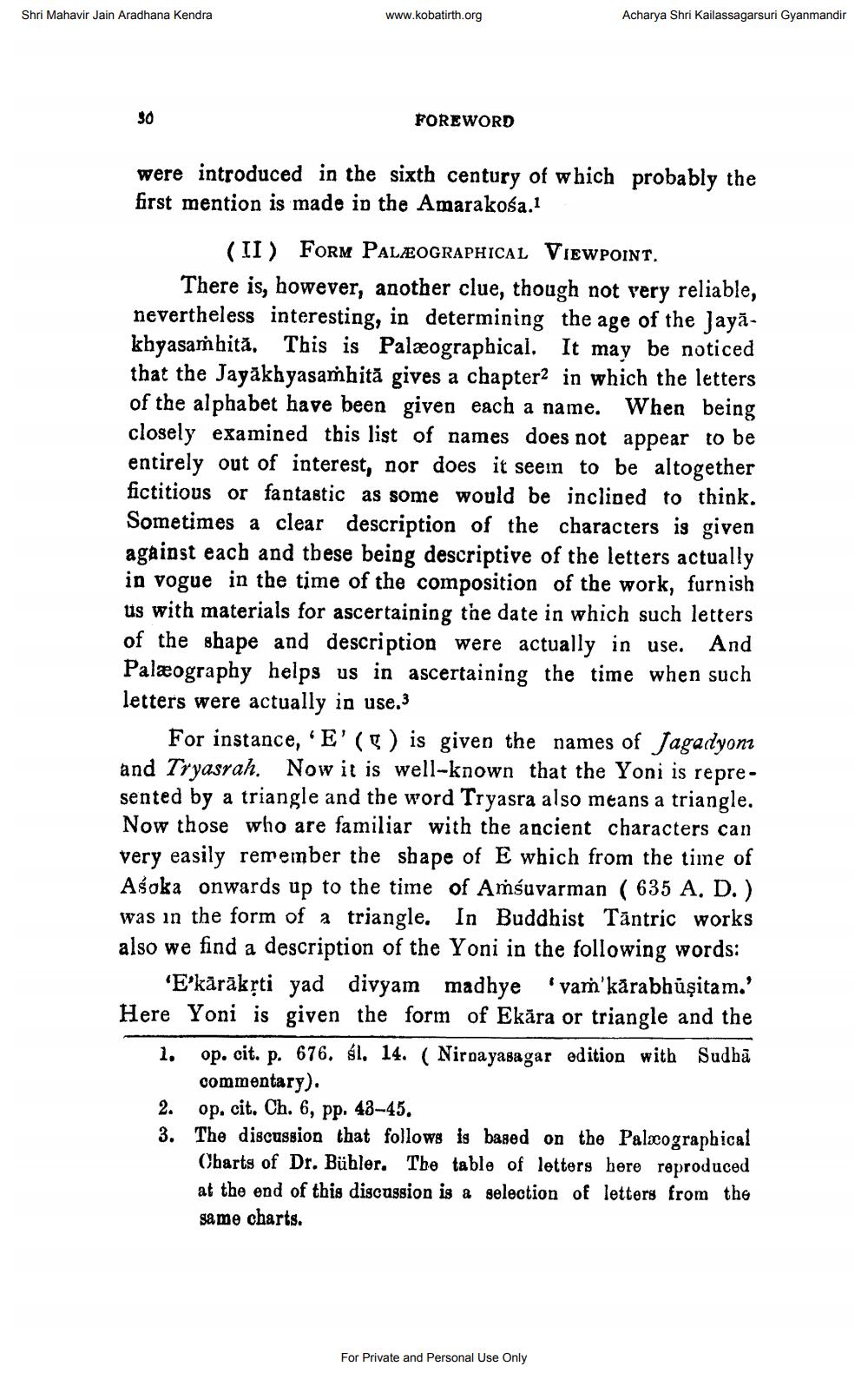________________
Shri Mahavir Jain Aradhana Kendra
www.kobatirth.org
Acharya Shri Kailassagarsuri Gyanmandir
FOREWORD
were introduced in the sixth century of which probably the first mention is made in the Amarakośa.1
(II) FORM PALÆOGRAPHICAL VIEWPOINT. There is, however, another clue, though not very reliable, nevertheless interesting, in determining the age of the Jayākhyasamhită. This is Palæographical. It may be noticed that the Jayākhyasambită gives a chapter2 in which the letters of the alphabet have been given each a name. When being closely examined this list of names does not appear to be entirely out of interest, nor does it seem to be altogether fictitious or fantastic as some would be inclined to think. Sometimes a clear description of the characters is given against each and these being descriptive of the letters actually in vogue in the time of the composition of the work, furnish us with materials for ascertaining the date in which such letters of the shape and description were actually in use. And Palæography helps us in ascertaining the time when such letters were actually in use.3
For instance, 'E' (!) is given the names of Jagadyon and Tryasrah. Now it is well-known that the Yoni is represented by a triangle and the word Tryasra also means a triangle. Now those who are familiar with the ancient characters can very easily remember the shape of E which from the time of Asoka onwards up to the time of ATMsuvarman ( 635 A. D.) was in the form of a triangle. In Buddhist Tântric works also we find a description of the Yoni in the following words:
'Eʻkārākṣti yad divyam madhye 'vam kārabhūşitam.' Here Yoni is given the form of Ekāra or triangle and the 1. op. cit. p. 676. sl. 14. ( Niroayasagar edition with Sudbā
commentary).
op. cit. Ch. 6, pp. 43-45. 3. The discussion that follows is based on the Palæographical
Charts of Dr. Bübler. The table of letters here reproduced at the end of this discussion is a selection of letters from the same charts.
For Private and Personal Use Only




